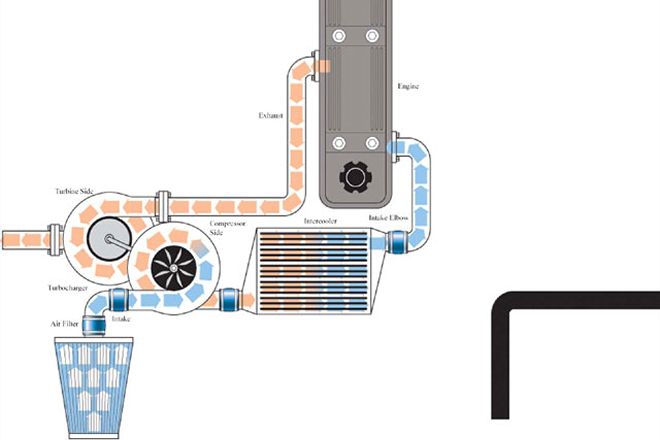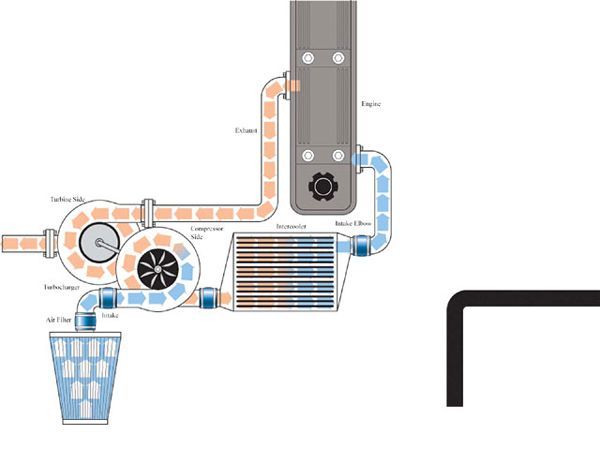
 Ali Mansour
Brand Manager, 4WD & Sport Utility
Ali Mansour
Brand Manager, 4WD & Sport Utility
 A turbocharger works by pulling ambient air into the turbine housing, which is then accelerated by a turbine wheel. The airflow generated by the wheel gets cooled when passing through an intercooler before going into the cylinder. Combustion blows hot air into the exhaust manifold, and the air is forced into the compressor inlet, which generates more turning force for the compressor wheel.
A turbocharger works by pulling ambient air into the turbine housing, which is then accelerated by a turbine wheel. The airflow generated by the wheel gets cooled when passing through an intercooler before going into the cylinder. Combustion blows hot air into the exhaust manifold, and the air is forced into the compressor inlet, which generates more turning force for the compressor wheel.
Driving your late-model diesel without a turbocharger would really suck. The turbo is instrumental in giving you all that go-fast power you have learned to love and expect from a diesel. In addition to computer-controlled fueling and precision engineering, the modern turbo has opened up seemingly limitless horsepower and torque possibilities. The idea behind turbocharging a diesel engine is to let the exhaust spin an impeller which amplifies the amount of air going to the engine and results in more power and with less work from the engine.
Although dozens of aftermarket turbo setups are available, we felt that upgrading our single turbo would be sufficient to realize the power potential we now have after installing our Diablo Sport Predator programmer and TS Performance box (see "Power Atop Power," page 50).
We called up the guys at ATS Diesel Performance and told them about our towing plans and horsepower expectations (10,000 pounds and 450-500 horses), and after comparing a few systems the Aurora 2000 turbo with the two-piece manifold seemed like the perfect match for our '06 Dodge Ram 2500. With the added boost coming from the new turbo, we also opted for ATS's Arc Flow intake that would help deal with the increased air now passing through the intercooler.
Once we gathered all of our air-boosting goodies we headed to Sutherland Diesel Performance in Palmdale, California, where Betty Sutherland specializes in a one-on-one customer service. After a few hours under the knife we had our Cummins whistling down the highway with obvious power gains. The added air helped to limit the unburned fuel passing through the system and kept us from looking like too much of a mosquito sprayer. Whether you're looking to burn down the track, blast through the mud, or keep your EGTs under control while towing, the boost benefits of a larger turbo mixed with the right amount of fuel will give your truck all the power and confidence to tackle whatever you throw at it.





 PhotosView Slideshow
PhotosView Slideshow




